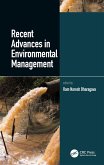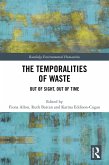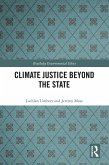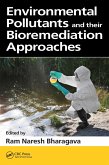Carbon moves through the atmosphere, through the oceans, onto land, and into ecosystems. This cycling has a large effect on climate - changing geographic patterns of rainfall and the frequency of extreme weather - and is altered as the use of fossil fuels adds carbon to the cycle. The dynamics of this global carbon cycling are largely predicted over broad spatial scales and long periods of time by Earth system models. This book addresses the crucial question of how to assess, evaluate, and estimate the potential impact of the additional carbon to the land carbon cycle. The contributors describe a set of new approaches to land carbon cycle modeling for better exploring ecological questions regarding changes in carbon cycling; employing data assimilation techniques for model improvement; and doing real- or near-time ecological forecasting for decision support. This book strives to balance theoretical considerations, technical details, and applications of ecosystem modeling for research, assessment, and crucial decision making.
Key Features
Helps readers understand, implement, and criticize land carbon cycle models
Offers a new theoretical framework to understand transient dynamics of land carbon cycle
Describes a suite of modeling skills - matrix approach to represent land carbon, nitrogen, and phosphorus cycles; data assimilation and machine learning to improve parameterization; and workflow systems to facilitate ecological forecasting
Introduces a new set of techniques, such as semi-analytic spin-up (SASU), unified diagnostic system with a 1-3-5 scheme, traceability analysis, and benchmark analysis, for model evaluation and improvement
Related Titles
Isabel Ferrera, ed. Climate Change and the Oceanic Carbon Cycle: Variables and Consequences
(ISBN 978-1-774-63669-5)
Lal, R. et al., eds. Soil Processes and the Carbon Cycle (ISBN 978-0-8493-7441-8)
Windham-Myers, L., et al., eds. A Blue Carbon Primer: The State of Coastal Wetland Carbon
Science, Practice and Policy (ISBN 978-0-367-89352-1)
Key Features
Related Titles
Isabel Ferrera, ed. Climate Change and the Oceanic Carbon Cycle: Variables and Consequences
(ISBN 978-1-774-63669-5)
Lal, R. et al., eds. Soil Processes and the Carbon Cycle (ISBN 978-0-8493-7441-8)
Windham-Myers, L., et al., eds. A Blue Carbon Primer: The State of Coastal Wetland Carbon
Science, Practice and Policy (ISBN 978-0-367-89352-1)
Dieser Download kann aus rechtlichen Gründen nur mit Rechnungsadresse in A, B, BG, CY, CZ, D, DK, EW, E, FIN, F, GR, HR, H, IRL, I, LT, L, LR, M, NL, PL, P, R, S, SLO, SK ausgeliefert werden.









